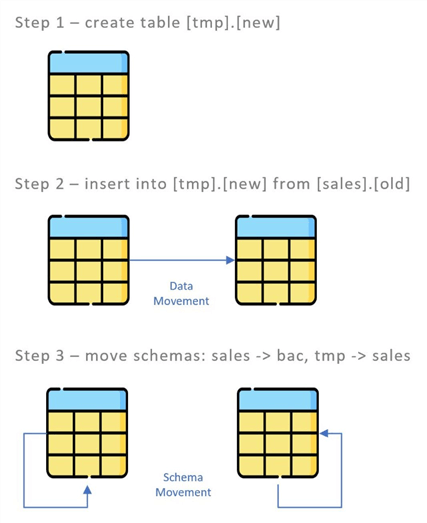


The statement below deletes the column FullName and adds the column LastName, but only if the LastName column doesn't already exist:
The ADD keyword requires the same combination of column name, data type and possibly dimensions, and extended column definition information as the CREATE TABLE statement when defining new columns. To add a column (other than a column of a collection type) to a table, use the ADD instruction: ALTER TABLE cycling.cyclistraces ADD firstname text To add a column of a collection type: ALTER TABLE cycling.upcomingcalendar ADD events listThe DROP keyword requires only the name of the column to be deleted. Oracle ALTER TABLE ADD Column By Examples First, you specify the name of the table, which you want to add the new column, after the ALTER TABLE clause. ) Command: Let’s add a column contact to the customer table that we have obtained after renaming the demo.
Syntax: ALTER TABLEIn addition, the IF EXISTS and IF NOT EXISTS clauses can be used with the ADD, REDEFINE, and DROP keywords to allow for action on columns only if they do or do not exist. In the above, the image we can observe that our table name has changed to customer. DBISAM's REDEFINE keyword removes this problem. This is what is sometimes required with other database engines and can result in loss of data.

You can modify structure of other users table only if the. It is possible to delete one column and add another in the same ALTER TABLE statement as well as redefine an existing column without having to first drop the column and then re-add the same column name. You can add columns to an table using ALTER TABLE command only if you are the owner of the table. Use the ALTER TABLE statement to alter the structure of an existing table. If nothing else, a test on a copy of you DB will show roughly how long it will take, if you can get a downtime window.The SQL ALTER TABLE statement is used to restructure a table.Ĭolumn_name data type but very few places have testing sites that emulate seriously busy Production websites. Seriously, try to find downtime, or at least low-volume time (Sunday 2am?) to do work like this. To add a column with PRIMARY KEY constraint, give the following command. I'm not 100% clear on what happens here, but if (this is a "what if" example, but it could happen) you add a char(100) column to a 10,000-row table that had just had its clustered index rebuilt with fillfactor = 0, then you are adding 100 bytes per row to pages that are already full, and where does that data go? Either you get page splits or forwarded records, both of which are going to take time for SQL to build - meaning long blocks and further delays to access requests to the table. You can also add a column to an existing table with PRIMARY KEY constraint only if the table is empty and if there is no PRIMARY KEY already existing in the table. Too, the new column may require updating the table.
Alter table add column update#
Like everyone says, this update will require an exclusive lock the table, and if it has to wait for that lock, then you may get blocking, timeouts, and possible irate users. By "constantly accessed" do you mean "I don't have any downtime or maintenance window in which to make critical changes to the database"? If so, then that is the scary part. The correct syntax for adding column into table is: ALTER TABLE tablename ADD columnname column-definition In your case it will be: ALTER TABLE Employees ADD EmployeeID int NOT NULL IDENTITY (1, 1) To add multiple columns use brackets: ALTER TABLE tablename ADD (column1 column-definition, column2 column-definition.


 0 kommentar(er)
0 kommentar(er)
